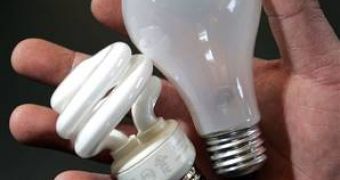Since its invention more than 125 years ago, the light bulb has suffered relatively small changes in its design. It is probably the most inefficient device ever developed, since more than 90 to 95 percent of the energy it consumes during operation is spent on useless heat radiating from the tungsten filament, and only about 10 percent is converted to efficient light. It has been recently calculated that, if we were to replace all the classic light bulbs with fluorescent lamps or bulbs, the electric energy consumed annually by mankind would probably drop to less than half.
Not only do the fluorescent light tubes offer the same amount of light to a fraction of the consumed power, but they also last up to 10 times longer than the classic light bulb. This ultimately translates into lower energy consumption, lower electric bills and, even more, lower carbon dioxide emission during electricity production by burning fossil fuel.
Since 2005, several countries, amongst which Brazil and Venezuela, started a systematic process of banning the classic light bulbs, in order to replace them with the more efficient fluorescent lamps by the year 2010. Recently, Ireland has joined the two countries, and started a more radical initiative, that plans to remove all the light bulbs by the end of the year 2008.
However, criticism quickly followed, due to environmental concern regarding the fact that Compact Fluorescent Lamps, or CFLs for short, contain small amounts of mercury vapor, a toxic chemical element, and the spectral light emissions and difficulties encountered while trying to start the device in cold weather conditions, and the relative higher costs of the CFL itself.
The United States, the world's largest greenhouse gas producer, uses more that 4 billion light bulbs for lighting. By banning the classic light bulb, power savings could total more than 18 billion dollars every year, equivalent to the electric bill of the entire state of Texas for one year, which translates in about 100 million tons of carbon dioxide gas prevented from being emitted by the electric power plants. The United States Congress was forced by the new energy law to ban the commercializing of the classic light bulb by the year 2012 to 2014.
Under the new energy efficiency law of the U.S., the light bulbs will only be produced in about 24 model variations, such as those used for traffic signal lights, ovens and refrigerators, and other special categories that find the usage of the classical light bulb critical.

 14 DAY TRIAL //
14 DAY TRIAL //